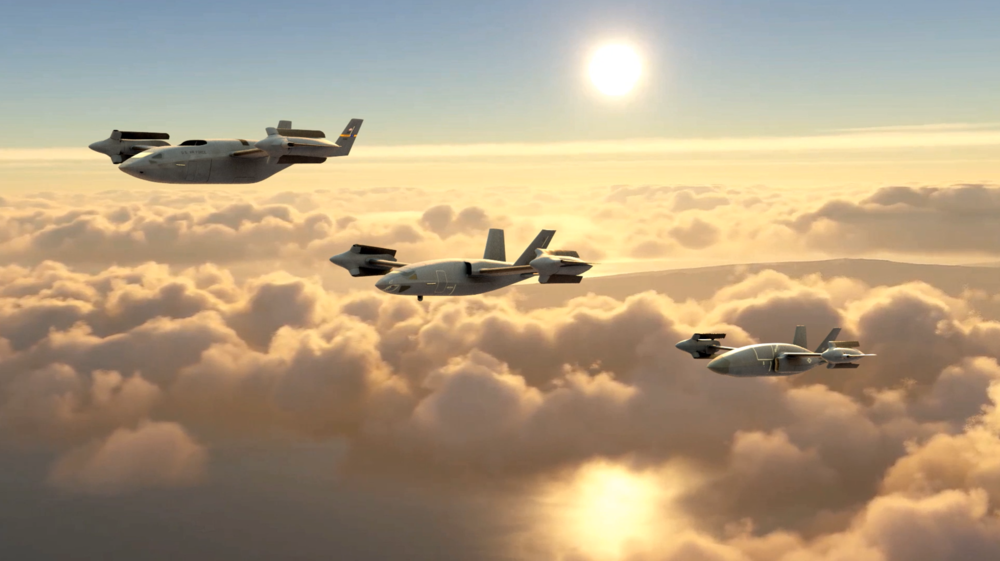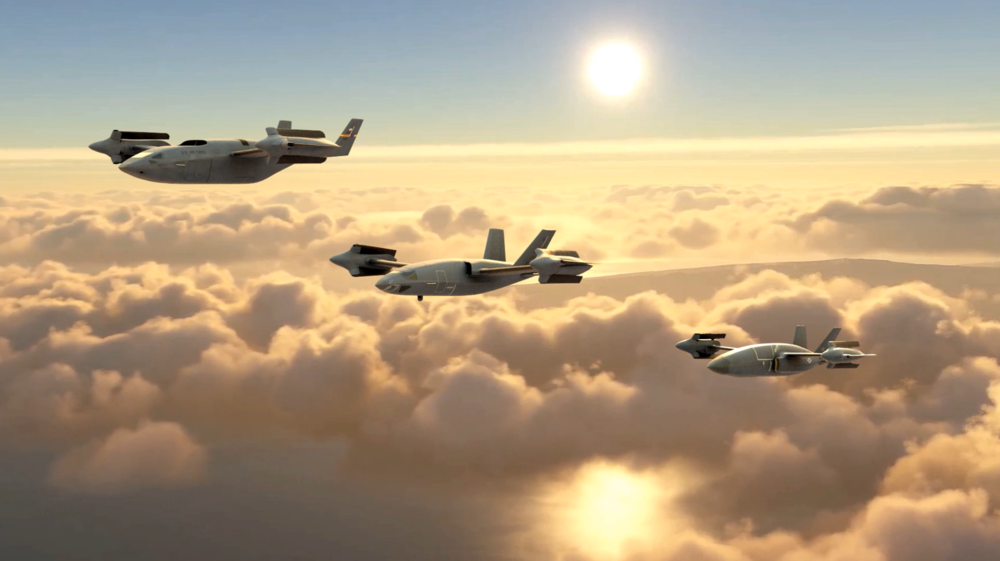Bell Unveils New High-Speed Vertical Take-Off and Landing Design Concepts for Military Application 2 August 2021
Bell Textron Inc., a Textron Inc. (NYSE: TXT) company, announced today the unveiling of design concepts for new aircraft systems for military applications which would use Bell's High-Speed Vertical Take-Off and Landing (HSVTOL) technology as the company continues its innovation of next generation vertical lift aircraft. HSVTOL technology blends the hover capability of a helicopter with the speed, range and survivability features of a fighter aircraft.
“Bell’s HSVTOL technology is a step change improvement in rotorcraft capabilities,” said Jason Hurst, vice president, Innovation. “Our technology investments have reduced risk and prepared us for rapid development of HSVTOL in a digital engineering environment, leveraging experience from a robust past of technology exploration and close partnerships with the Department of Defense and Research Laboratories.”
Bell’s HSVTOL design concepts include the following features:
- Low downwash hover capability
- Jet-like cruise speeds over 400 kts
- True runway independence and hover endurance
- Scalability to the range of missions from unmanned personnel recovery to tactical mobility
- Aircraft gross weights range from 4,000 lbs. to over 100,000 lbs.
Bell has explored high-speed vertical lift aircraft technology for more than 85 years, pioneering innovative VTOL configurations like the X-14, X-22, XV-3 and XV-15 for NASA, the U.S Army and U.S. Air Force. The lessons learned from the XV-3 and XV-15 supported the development of the Bell-Boeing V-22 Osprey tiltrotor, an invaluable platform that changed the way the U.S. military conducts amphibious assault, long range infiltration and exfiltration and resupply with a cruise speed and range twice that of helicopters it replaced.


Bell Unveils New High-Speed Vertical Take-Off and Landing Design Concepts for Military Application
HSVTOL technology blends the hover capability of a helicopter with the speed, range and survivability features of a fighter aircraft.
Sierra Nevada joins Bell’s ‘high-speed vertical take-off and landing’ project
20 September 2022Defence contractor Sierra Nevada will design mission systems for a high-speed vertical take-off and landing (HSVTOL) aircraft concept being developed by Bell.
The US helicopter manufacturer, a subsidiary of Textron, revealed its HSVTOL concept in 2021, saying the aircraft will have the range and speed of a jet fighter and the ability to hover like a helicopter.
On 19 September, Bell said Nevada-based Sierra Nevada will “support the design and development of mission systems for HSVTOL variants”.
The companies disclose no other details about the programme, and Bell has not revealed a development timeline.
“We’ve made significant progress in Bell’s HSVTOL technology development in 2022,” says Bell vice-president of innovation Jason Hulst. He adds that the company will disclose more details “in the coming year”.
Bell has said its HSVTOL will be able to cruise at 400kt (741km/h).
Images released by Bell appear to show an aircraft with foldable wing-mounted props and – similar to traditional fighters – a propulsion system integrated into the aircraft’s fuselage. Seemingly, the props would be used during hover, and they would fold as the main propulsion system powers the aircraft in forward flight.
FlightGlobal previously reported that the US Air Force Research Laboratory contracted Bell to study a concept similar to HSVTOL.

Sierra Nevada joins Bell’s ‘high-speed vertical take-off and landing’ project
Defence contractor Sierra Nevada will design mission systems for a high-speed vertical take-off and landing (HSVTOL) aircraft concept being developed by Bell.

